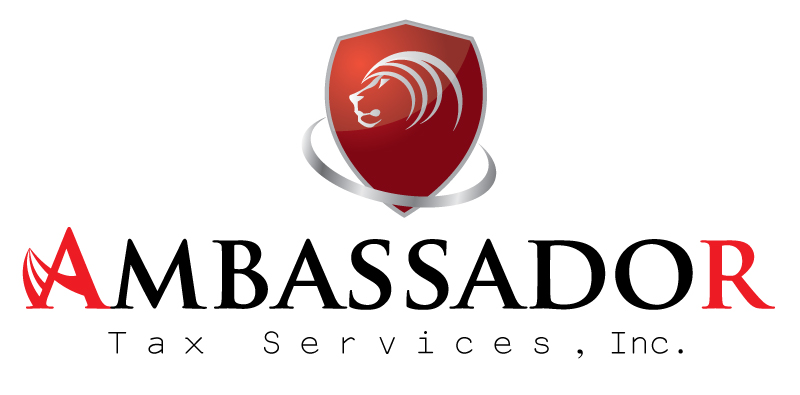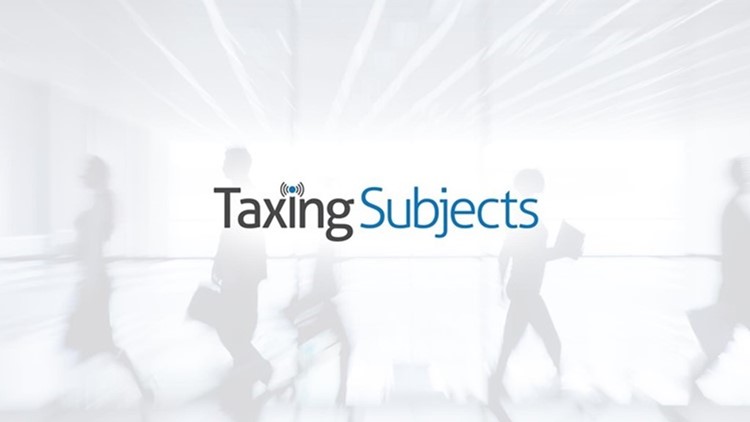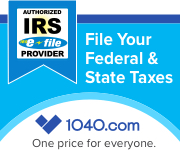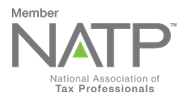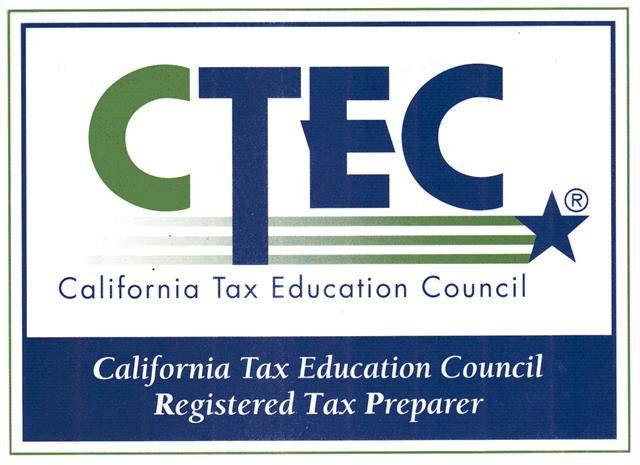
by Ambassador Tax Services, Inc. | Dec 31, 2020 | Tax Tips and News
The Treasury Department and Internal Revenue Service yesterday evening announced that the next set of Economic Impact Payments are officially on the way. According to the IRS release, the agency aimed to start direct deposits later that night and send the first round of paper checks today.
What do I have to do to receive a $600 Economic Impact Payment?
Most eligible Americans will automatically receive their direct payment in the same form as the first Economic Impact Payment, whether by direct deposit, Direct Express card, or paper check or debit card. However, the IRS notes that some who previously received an EIP by check could instead get a debit card for this payment.
The IRS says the following groups will automatically receive payments:
- Eligible taxpayers who filed a 2019 tax return
- Social Security retirement recipients
- Survivor or disability benefits (SSDI) recipients
- Railroad Retirement benefits recipients
- Supplemental Security Income (SSI) benefits recipients
- Veterans Affairs benefits recipients
- Non-Filers: Enter Payment Info Here online tool registrants who received an EIP
- Non-filers who successfully submitted a simplified tax return
Qualifying Americans who do not normally file a tax return and who are not included in any of the above groups will need to file a tax year 2020 return and claim the Recovery Rebate Credit to receive their payment.
After you receive an EIP, expect an IRS notice confirming the amount of the payment.
Who is eligible for the $600 Economic Impact Payment?
Eligibility requirements are generally the same as the first round of EIPs:
- $600 for individuals with a 2019 AGI that does not exceed $75,000
- $1,200 for married couples filing jointly with a 2019 AGI that does not exceed $150,000
When filers’ AGI exceeds those thresholds, the amount of the direct payment begins to phase out.
While those thresholds remain the same, the IRS says that—aside from the amount of the payment—there is another major difference between the first and second EIPs: Married filing jointly returns for couples that include only one valid Social Security Number holder are now eligible for the $600 EIP.
“In this situation, these families will now be eligible to receive payments for the taxpayers and qualifying children of the family who have work-eligible SSNs,” the IRS explains. “People in this group who don’t receive an Economic Impact Payment can claim this when they file their 2020 taxes under the Recovery Rebate Credit.”
What if I am eligible but haven’t received either Economic Impact Payment by December 31, 2020?
The IRS says that those who qualify but did not receive either EIP in 2020 can claim a special tax credit when filing a tax year 2020 return. “People will see the Economic Impact Payments (EIP) referred to as the Recovery Rebate Credit (RRC) on Form 1040 or Form 1040-SR since the EIPs are an advance payment of the RRC,” the IRS says. Specific to the RRC, the IRS notes that many taxpayers—even recent college grads—may be able to claim the credit, so they recommend confirming eligibility requirements prior to filing.
What happens if Congress approves a larger direct payment this week?
While the majority leader yesterday declined to bring an up-or-down vote for increasing direct payments to $2,000 to the floor of the Senate, it’s still possible they could pass an increase before the end of the week. If that happens, the IRS says, “the Economic Impact Payments that have been issued will be topped up as quickly as possible.”
Sources: “Treasury and IRS begin delivering second round of Economic Impact Payments to millions of Americans”
– Story provided by TaxingSubjects.com
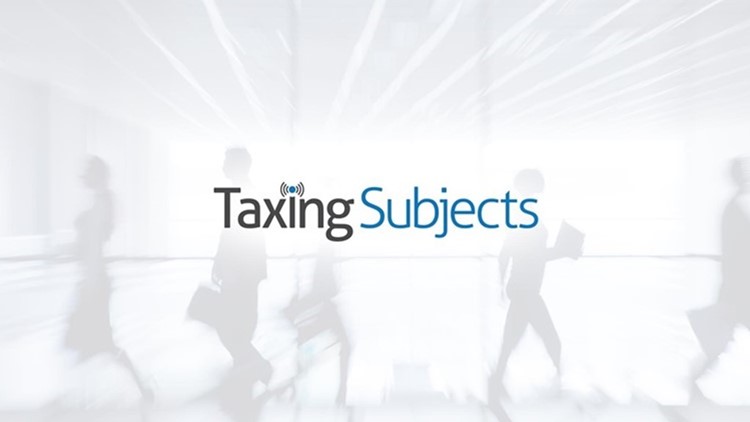
by Ambassador Tax Services, Inc. | Dec 30, 2020 | Tax Tips and News
The president signed H.R. 133, or the Consolidated Appropriations Act of 2021, on Sunday, December 27, greenlighting $900 billion in coronavirus relief for Americans. While the CAA is actually a government funding bill, it includes provisions for expanding the Paycheck Protection Program, extending unemployment benefits, and a second round of direct payments.
When will eligible Americans start receiving $600 direct payments?
According to Politico, Treasury Secretary Steven Mnuchin expected to begin sending some direct payments as early as this week. However, recent events could jeopardize the secretary’s timetable.
First, that projection seems aggressive given the Economic Impact Payment rollout. Reporter Brian Faler notes that EIPs began sending a couple weeks after the CARES Act was signed into law. However, despite taking months to complete—some non-filers were able to sign up for payments as late as November—Faler speculates that the existing EIP-distribution apparatus “should make this round easier for the IRS.”
Second, Mnuchin delivered those remarks on December 21: three days before the bill was presented to the president and six days before it was signed. It’s hard to know if the delay in signing the CAA will actually affect Secretary Mnuchin’s rollout of direct payments. The agency should have record of filers and non-filers who previously received EIPs, and existing tools like Non-Filers: Enter Payment Info Here and Get My Payment can help identify eligible non-filers who may have been missed the first time around.
Finally, the House of Representatives voted yesterday to increase the amount of these direct payments to $2,000 for individuals. If the legislation, referred to as the CASH Act, passes in the Senate, that would mean another recalibration for the Treasury Department. According to NPR, “the Senate is scheduled to reconvene at noon on Tuesday,” so we’ll soon know more about how much Americans can expect to receive.
Sources: H.R. 133; Politico: “Mnuchin: New stimulus checks will begin next week”; NPR: “House Endorses Trump-Backed $2,000 Payments Amid Feud Within GOP”
– Story provided by TaxingSubjects.com

by Ambassador Tax Services, Inc. | Dec 24, 2020 | Tax Tips and News
Taxpayers who expect to do some business-related driving next year will probably be happy to learn that the optional standard mileage rates for 2021 are now available from the Internal Revenue Service. Included in Notice 2021-02, the new standard mileage rates will apply on January 1, 2021.
The optional standard mileage rates are one of two methods for determining the amount of deductible auto expenses—the other being the actual expense method, which is explained in IRS Publication 463. In addition to business use, the IRS says taxpayers can use the standard rates to determine operating costs for “charitable, medical, or moving purposes.”
What are the 2021 optional standard mileage rates?
The optional standard mileage rates outlined in the Notice 2021-02 are:
- 56 cents per mile driven for business use, down 1.5 cents from the rate for 2020,
- 16 cents per mile driven for medical, or moving purposes for qualified active duty members of the Armed Forces, down 1 cent from the rate for 2020, and
- 14 cents per mile driven in service of charitable organizations, the rate is set by statute and remains unchanged from 2020.
“The standard mileage rate for business use is based on an annual study of the fixed and variable costs of operating an automobile,” the IRS explains. “The rate for medical and moving purposes is based on the variable costs.”
When can I use the optional standard mileage rates to determine auto expenses?
The IRS says you are only eligible to use the standard mileage rate if you choose it “the first year the car is available for business use.” Taxpayers who do that “can choose either the standard mileage rate or actual expenses [in later years].”
Taxpayers who lease a vehicle do not have the same flexibility in later years: “Leased vehicles must use the standard mileage rate method for the entire lease period (including renewals) if the standard mileage rate is chosen.”
The Tax Cuts and Jobs Act imposes other limitations
The IRS says that the Tax Cuts and Jobs Act does not allow taxpayers to claim the following automobile-related deductions:
- Miscellaneous itemized deduction for unreimbursed employee travel expenses
- Deduction for moving expenses, unless they are members of the Armed Forces on active duty moving under orders to a permanent change of station
What else is included in Notice 2021-02?
Notice 2021-02 also has information about the following automobile-related tax issues:
- The maximum automobile cost used to calculate the allowance under a fixed and variable rate (FAVR) plan
- The maximum fair market value of employer-provided automobiles first made available to employees for personal use in calendar year 2021 for which employers may use the fleet-average valuation rule in or the vehicle cents-per-mile valuation rule
Check out the notice at IRS.gov/Pub/IRS-Drop/n-21-02.pdf.
Source: IR-2020-279
– Story provided by TaxingSubjects.com

by Ambassador Tax Services, Inc. | Dec 23, 2020 | Tax Tips and News
The Internal Revenue Service and its Security Summit partners routinely raise awareness about data security issues threatening the financial health of taxpayers. Unsurprisingly, they’re not the only agency trying to protect you from con artists.
The Federal Trade Commission conducts its own outreach to protect Americans from scams. Their “12 Days of Consumer Protection” campaign is a series of blog posts dedicated to highlighting scams targeting consumers during the holidays and early 2021.
The FTC’s list covers a wide range of scams, from fake shopping sites to porch pirates. When you’re done reviewing this list, make sure you pass the info along to family and business clients so they can these scams, too!
Fake Shopping Websites
Fake shopping websites are a year-round trap for anyone browsing Google results in search of a deal, but criminals tend to ramp up their efforts around the winter holiday season. Since scammers use a variety of tactics to trick their victims, the FTC recommends taking the following preventative steps when shopping online:
- Instead of clicking on a link, say in an email, type in the store’s URL yourself, so you know where you’re headed.
- Only pay on sites with URLs that starts with https. That ‘s’ means your transaction is encrypted…but scammers know how to encrypt, too. So don’t believe that a site is the real deal just because the site uses encryption.
- Pay by credit card. It gives you way more protections if something goes wrong.
Remember, you might miss subtle changes when looking for The Best Deal Ever™, like a number “1” instead of a letter “l” in a too-good-to-be-true “Walmart” link. That’s why the FTC recommends following other shopping guidelines on their site: https://www.consumer.ftc.gov/articles/0020-shopping-online.
Fake Job Listings
The pandemic significantly increased the number of unemployed Americans, and—as the FTC blog points out—many Americans are already interested in part-time work during the holidays. Where you find people in need, you’ll find scammers looking to take advantage.
The FTC says you should follow three tips when job hunting:
- Scammers often require you pay them to “secure a position.”
- Scammers often ask for your financial data or personally identifiable information up front.
- Read former-employee reviews before applying.
Looking for a job isn’t easy in a normal year, make sure scammers don’t make it even worse during the lockdown.
Paying with a Gift Card
Fraudsters frequently demand you pay with a gift card. This tactic exists across the spectrum of phishing scams—whether tax-related or garden-variety cons—and it always signals the offer is shady.
Fake Shipping Messages
Scammers are sending fake shipping notices in emails and text messages that appear to come from national shipping companies, like UPS and FedEx. Since they’re even using real logos, it can be hard to spot scam emails that are sandwiched between real notifications in your inbox.
To avoid getting phished, the FTC says you should never click links embedded in emails and keep your security software—antiviruses, anti-spyware, and the like—updated. While you’re updating those programs, don’t forget to update everything else since criminals can exploit security holes in any software, up to and including your operating system.
Fake Charities
The fake charity may not be new, but it’s one of the most effective phishing scams you’ll encounter. That’s because criminals are more than happy to take advantage of your impulse to help people in trouble.
Don’t let scammers prevent you from donating. Instead, follow these tips from the FTC for safely giving to charity:
- Don’t be rushed into giving. Yes, it’s the end of the year. But legit charities will be happy to take your money whenever you choose to give it.
- Check out the charity before you give, especially because scammers love to use names that sound like real charities you’ve heard of. Use these organizations to help you do your research.
- If anyone tells you to pay in cash, with a gift card, or by wiring money using a company like MoneyGram or Western Union, stop. That’s how scammers ask you to pay.
Family Emergency Scams
Social media has made it easier than ever before for criminals to impersonate your friends and loved ones in phone calls, emails, and text messages. That’s why the FTC cautions you to resist the urge to immediately send help when you get a breathless SOS pleading for money. Instead, contact that person or someone close to them on a known number to confirm the situation. If it turns out to be a scam, report it and—if a phone call—block the number.
While hanging up on scam phone calls is a time-honored tradition in our household, the FTC says that call blocking is a much better strategy for combatting fraudsters. Check out the FTC page explaining what call blocking is and how to use it on your device: https://www.consumer.ftc.gov/articles/how-block-unwanted-calls.
Porch Pirates
With all the attention paid to phishing calls, emails, and texts, it’s easy to forget about the criminals in our midst. “Porch pirates” are more than happy to steal the stack of Amazon and FedEx boxes sitting on your front porch when you’re not home.
While nothing is fool-proof, there are steps you can take to make sure you are the one opening those boxes. The FTC recommends three basic safeguards: require a signature, install motion-activated lights, and provide specific delivery instructions.
Fake e-Card and Letter-to-Santa Websites
Fake e-card and letter-to-Santa websites essentially ask victims to provide personal information as part of the customization process. Unfortunately, there’s no cute letter if it’s a scam site—instead, the “gift” is identity theft.
Here’s what the FTC says you should do to avoid getting scammed:
- Check out the website. Do a quick online search for the site or company name, plus the words “complaint,” “review,” or “scam.” What do people say about them? (Knowing, of course, that those glowing reviews could be fakes…)
- Share only what you need to share. Does the site really need your home address, your age, or access to your contacts? And none of these companies needs your bank account or Social Security number. (Frankly, Santa probably already knows, so why would he ask?)
- Don’t click links in unexpected texts or emails. Nothing good comes of that. Instead, check them out first, and then type in the URL yourself so you know where you’re headed.
- Ignore calls for immediate action. Scammers try to get you to act before you have time to think. Take your time. Legit offers will still be there.
General Shopping Advice
Like a pre-flight checklist, it’s always a good idea to review best practices—even if you have committed everything to memory. Pride cometh before a fall, after all. So, the FTC closed out the 12 Days campaign with general shopping advice. (The below list includes a mix of recommendations from the 11th and 12th installments of the series.)
- Confirm that the seller is legit. Read reviews and recommendations about the product, seller, and warranties from sources you trust. Look for reviews about their reputation and customer service, and be sure you can contact the seller if you have a dispute.
- Read the reviews. What are experts saying about the product you’re after? Do they compare brands or versions of the product? Is tech ability needed to appreciate and use it?
- Compare prices. Obviously, right? But online or in-person door-buster “deals” with low, low prices often pressure you to act quickly. So, do some up-front work on what price neighborhood to expect, especially for higher-priced items. That way, you know what’s really a good deal, and what’s just lots of hype.
- What about privacy? You know your comfort level with what your devices know about you. But if you’re gifting, how would the recipient feel about, say, a connected watch that tracks her steps and encourages her to walk more? Might she, I don’t know, set fire to that device after a few days? Or thank you SO much for suggesting that she ought to exercise? Theoretically, you understand.
- Pay by credit card. You have the most protections when you shop (online or elsewhere) with a credit card.
While we’re at it, let’s cover some basic security advice:
- Install security software
- Keep all software updated
- Never click on embedded links or attached files in emails and texts
- Don’t take calls from unknown numbers
- Don’t open messages from unknown senders
- Don’t scan QR codes without first verifying who created it
- Create and maintain a written information security plan
On that last point, be sure your security plan covers what you’re going to do to prevent a data breach, as well as the steps you’ll take after one has occurred.
Be sure to check out each of the “12 Days of Consumer Protection” blogs on FTC.gov:
Source: FTC.gov
– Story provided by TaxingSubjects.com

by Ambassador Tax Services, Inc. | Dec 22, 2020 | Tax Tips and News
According to reporting from The Hill, Congress is poised to vote on a second coronavirus relief package. The bill is expected to pass Congress and land on the president’s desk later today, greenlighting $900 billion in aid that will include direct payments, unemployment benefits, and additional Paycheck Protection Program funds.
The proposed bipartisan plan addresses coronavirus-related financial hardships by setting aside funds that—in many cases—will renew or expanding key programs that have previously helped Americans during the pandemic. Here’s a short list of how Congress intends to direct funding in the aid package:
- New direct payments for eligible taxpayers
- Extension of unemployment benefits
- Renewed eligibility for the Paycheck Protection Program
- Rental assistance
- SNAP funding
- Transportation industry funding
- School funding
- Vaccine and testing funding
The Hill notes it also includes tax provisions designed to further blunt the financial strain caused by the pandemic: “The bill would allow taxpayers to use their 2019 income for purposes of claiming the earned income tax credit and child tax credit, two credits that benefit low- and middle-income households. This will allow households where people lost jobs or income in 2020 to be eligible for credits or receive larger credits, because the credit amounts phase in with income.”
Additional tax-related changes include allowing business meal deductions for two years and extending the employee retention tax credit. An extension of the eviction moratorium and ending the emergency lending authority granted to the Federal Reserve by the CARES Act are some other noteworthy changes.
The bill addresses “surprise medical bills.”
The proposed legislation also addresses financial strain arising from “surprise medical bills.” According to The Hill, “[the bill] would hold patients harmless from surprise bills, including from air ambulance providers and prohibit out-of-network providers from ‘balance billing’ unless they give patients 72-hour notice of their network status and an estimate of the charges.”
How are the new direct payments different from the CARES Act Economic Impact Payments?
CARES Act Economic Impact Payments were worth up to $1,200 for eligible individual taxpayers ($2,400 for MFJ) with an adjusted gross income of up to $75,000 ($150,000 for MFJ), with an additional $500 per qualifying dependent. Taxpayers whose AGI exceeded those thresholds were eligible for reduced payments, eventually zeroing out at $99,000 ($198,000 for MFJ with no children).
The IRS generally used tax return information from 2018 and 2019 to automatically determine eligibility for EIPs. Those who hadn’t filed a return for either year needed to submit their information to the agency, though non-filers receiving certain government benefits—like Railroad Retirement, Social Security, Social Security Disability, Supplemental Security Income, and Veterans Association—were automatically qualified.
The new direct payments will be valued at $600 for eligible taxpayers ($1,200 for MFJ), with $600 for qualifying child dependents. While taxpayers must meet the same AGI criteria to qualify, some non-citizens may be eligible to receive the new payments: “The bill will allow U.S. citizens who are in households that also include non-citizens to receive the payments.”
Source: The Hill
– Story provided by TaxingSubjects.com


